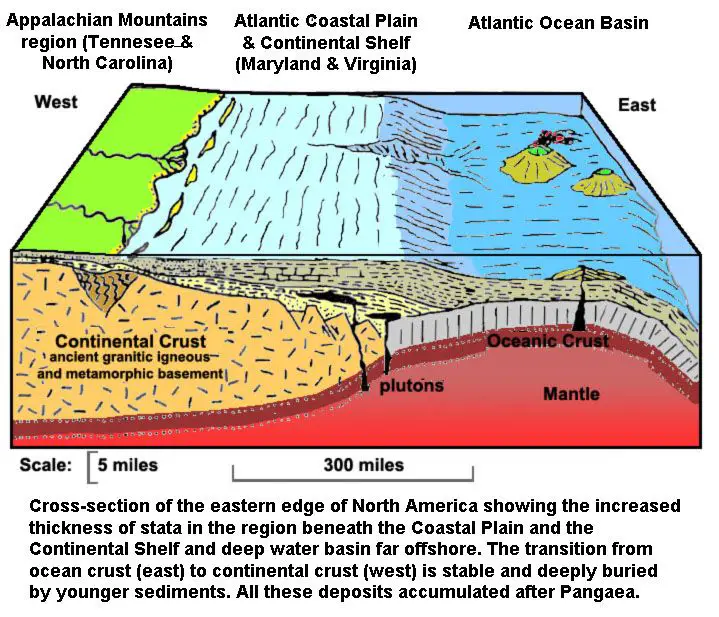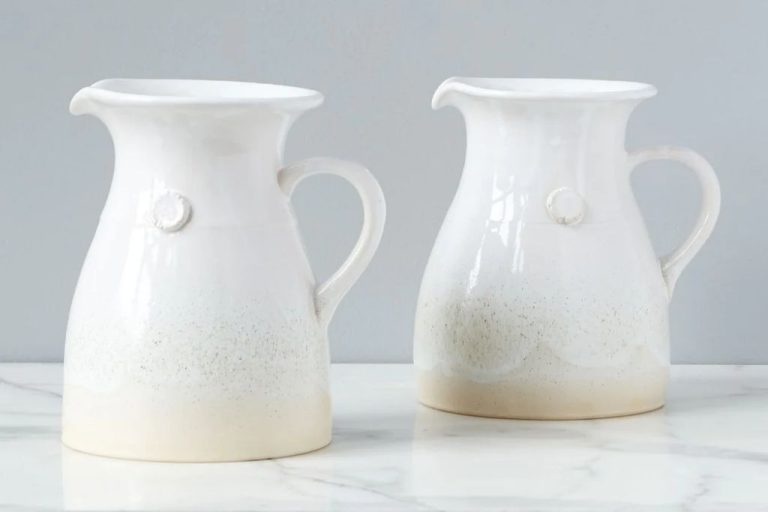How Is Porcelain Clay Made?
Porcelain clay is a type of ceramic material that is known for its white color, durability, and translucency. It is one of the most versatile clays used in pottery and ceramic production. Porcelain has been crafted in China for over a thousand years and was first made in Europe in the 18th century.
The word “porcelain” comes from the Old Italian word “porcellana” meaning cowrie shell, due to its resemblance to the surface of polished shells. Porcelain clay consists primarily of kaolin, a white clay rich in the mineral kaolinite. It also contains other clays, feldspars, and quartz.
Porcelain is highly valued for its white color after firing, hardness, low porosity, and resistance to staining. It has very high plasticity, allowing it to be molded into thin, delicate shapes. When fired at high temperatures, porcelain becomes vitrified, resulting in a translucent, glass-like quality.
These unique properties make porcelain ideal for tableware, decorative items, fixtures, and other objects where durability, whiteness, and translucency are desired. It is also highly prized in art applications. The history of porcelain is intertwined with global trade, wealth, and culture.
Clay Sources and Mining
Porcelain clay is not found everywhere in nature. It forms over millions of years as feldspar and quartz particles break down from rocks like granite through weathering. China has large deposits of porcelain clay, particularly in the provinces of Jiangxi, Guangdong, Guangxi, and Fujian. Other countries with significant porcelain clay deposits include the United States, United Kingdom, France, Germany, Czech Republic, and Brazil.
Clay deposits are mined from open pit mines, dredged from rivers and lakes, or extracted underground. Surface mining involves scraping away the surface to access seams of clay underground. This method recovers high purity clay but can negatively impact the environment. Dredging involves vacuuming clay deposits from bodies of water using suction pumps. Underground mining sinks shafts and digs tunnels to reach clay seams. The mining method depends on the location and depth of the clay deposit.
Processing the Raw Clay
After the raw clay has been mined, it goes through extensive processing before it is ready to be made into porcelain. This processing is crucial for removing impurities and getting the clay to the optimal consistency and particle size.
The first step is crushing and grinding. Large chunks of raw clay are run through powerful mechanical crushers. The crushers break down the clay into smaller, more manageable sized pieces. After crushing, the clay moves on to huge grinding mills. The grinding mills pulverize the clay into a fine powder.
After grinding, the clay goes through a washing process. First it is mixed with water to create clay slurry or slip. This slip is run through screens to filter out rocks, sand, seashells and other debris. It may also go through magnetic separators to remove iron and other metal contaminants. The clay slurry is then pumped into settling tanks where the good clay settles to the bottom and impurities stay suspended in the water. The clean clay is removed and the waste water is disposed of.
Through crushing, grinding and extensive washing, the raw mined clay is processed into a clean, homogeneous form ready for further steps in porcelain production.
Analyzing and Blending
Once the raw clays have been mined and processed into a workable form, the next step is to analyze the clays to determine their properties. Clays have different levels of plasticity, shrinkage, porosity, color, etc. Testing is done to measure these properties. Some key tests include:
- Plasticity – Measured using a plastometer, higher plasticity makes clay easier to shape.
- Shrinkage – The amount the clay body shrinks as it dries is tested by making test bars.
- Absorbency – Tested by measuring how much water a clay sample absorbs.
- Color – The natural color of the raw clay is measured.
These tests help porcelain manufacturers determine what types of clays they need to blend together to achieve the desired properties in the final porcelain product. Blending different clays balances out properties like plasticity, shrinkage, and color. Additives like quartz may also be blended in to reduce shrinkage and increase strength. The goal is to create a clay body that has the right blend of workability, strength, and whiteness after firing. Careful analysis and blending results in a high quality porcelain.
Preparing the Clay Body
Once the clay has been properly blended, it must go through additional processing to prepare it into a workable porcelain clay body. This involves adding binders, plasticizers, fillers and water to improve the clay’s workability, flexibility and strength.
Binders are added to help hold the clay particles together and increase dry and fired strength. Common binders include bentonite, ball clay, kaolin, and fine silica. Plasticizers help increase the clay’s plasticity and workability. These are often sodium silicates or Darvan. Fillers like quartz, alumina, and feldspar help prevent shrinkage and control thermal expansion.
Water is also crucial for proper clay preparation. The water mixed into the clay lubricates the particles so they can slide over each other when shaping the clay. Too much water will make the clay sticky and difficult to handle. Too little water will make the clay stiff and crack easily. Finding the right consistency is an important step.
Clay bodies are carefully formulated to achieve the desired characteristics after firing. Adjustments in the ingredients and quantities used alter the clay’s firing performance, strength, porousness, and more. With the proper preparation, the clay becomes an excellent medium for creating flawless porcelain wares.
Forming and Shaping
There are several methods used to form porcelain clay into different shapes and products. The main methods include:
Throwing
Throwing is done on a potter’s wheel and involves centering a lump of clay on the wheel head and then using a combination of pressure from the hands and momentum from the rotating wheel to manipulate and form the clay. Skilled throwers can create a wide variety of round shapes and curved surfaces like bowls, vases, cups, and plates.
Jiggering
Jiggering uses a machine called a jigger which has a rotating profile tool mounted to a lever arm. The clay is placed on a mold and as the tool presses down, it rotates and shapes the clay along the inner walls of the mold. Jiggering allows for fast, consistent production of curved pieces with thinner walls.
Casting
Casting involves pouring liquefied clay into molds to produce solid shapes. The clay is mixed with water to form slip which is then poured into plaster molds. As the water is absorbed, the clay adheres to the mold surface, building up the shape from the inside out. Once firm enough, the excess slip is poured out leaving a hollow cast piece.
Drying and Handling
After porcelain pieces are shaped, they undergo a controlled drying process to remove moisture before firing. This is a critical stage, as improper drying can lead to defects.
If drying happens too quickly, the outer surface can dry faster than the interior, resulting in cracks as the inner moisture tries to escape. Slow, controlled drying is necessary to allow moisture to evaporate evenly throughout the clay body.
To prevent uneven drying, pieces are placed in a room with carefully regulated temperature and humidity. The conditions are adjusted based on factors like the piece thickness and clay composition. Monitoring the drying with precise instrumentation ensures ideal conditions are maintained.
Workers also handle pieces gently during drying to avoid disturbing any emerging cracks. Smooth, defect-free drying results in high quality fired porcelain with its signature translucency and strength.
Glazing
Glazing is a very important step in porcelain production, as it not only affects the appearance of the final product, but also impacts certain physical properties.
Glazes are coatings applied in liquid form to biscuit fired porcelain that melt and form a glassy surface when fired at high temperatures. The main purposes of glazing porcelain are decorative effects, like adding color or sheen, as well as functional effects like making the piece waterproof or more durable.
Glazes are made up of a mixture of silica, fluxes, and stabilizers. common glaze ingredients include feldspar, clay, dolomite, silica, and colorants like metal oxides. The ingredients are finely ground and mixed with water to form a fluid suspension that can be applied by brushing, dipping, or spraying.
Glaze slips and engobes, which are used to coat the porcelain before glazing, serve decorative and functional purposes as well. Engobes, made of clay and flux suspensions, are used to mask the underlying porcelain color. Slips provide a smooth surface for glazing.
The glazing process requires careful application to avoid unevenness or dripping. Each coat must dry before the next is applied. The thickness of the glaze affects how it melts and flows during firing. Several thin coats are often preferred over one thick application.
The glaze is designed to mature and melt to a glassy state at the peak temperature reached in the kiln during firing. Specific glaze ingredients and mixtures are selected and tested to achieve the desired appearance, color, and surface properties in the finished porcelain ware.
Firing
The firing process is a critical step in transforming raw porcelain clay into a final ceramic product. Firing occurs in a high-temperature kiln or furnace capable of reaching over 1300°C (2372°F). At these extreme temperatures, chemical and physical transformations take place that permanently harden and strengthen the clay.
The initial stage of firing is referred to as bisque firing. During bisque firing, any remaining moisture is driven out of the clay slowly to prevent cracking. In addition, clay particles partially begin to fuse together through sintering. However, at bisque temperatures (around 1100°C or 2012°F), the clay is not fully vitrified or glass-like.
After bisque firing, the porcelain undergoes a final high-temperature firing called glost firing. The temperatures reach over 1300°C (2372°F), enabling the clay to become fully vitrified as the silica and clay particles completely fuse. At these high heat levels, the glaze ingredients melt, flow, and then harden to form a glassy coating on the surface.
Firing schedule, temperature uniformity, heating rate, and kiln atmosphere all require careful control throughout the firing process. Skilled technicians constantly monitor the kiln to ensure firing completes successfully without defects. The result is a fully vitrified porcelain material transformed through intense heat into a strong, durable, and translucent final product.
Quality Control
Maintaining consistent quality is crucial in porcelain production. Manufacturers have rigorous testing procedures to ensure every piece meets exacting standards before it leaves the factory.
All finished porcelain products undergo visual inspections to check for any defects or irregularities. Experienced inspectors examine the glaze, painting, and physical shape of each item. Any pieces with flaws are removed from production.
In addition to visual checks, samples from each batch undergo laboratory testing. Properties like strength, thermal expansion, water absorption, and chemical resistance are evaluated. These tests confirm the porcelain meets specifications for its intended use.
To achieve uniform results, manufacturers carefully control variables throughout the production process. Raw materials are blended according to precise formulas, and processing conditions like temperature and humidity are closely regulated. With tight quality control at every step, porcelain producers can deliver consistent, high-quality wares to their customers.





